Protip: I use Japanese characters in this post. They might explode a bit if you're not on a modern Windows or OS X/Linux, but the worst that will happen is that you'll see them as a series of question marks or mangled characters.
Okay, so I've watched a lot of shows, which I'll attempt to use this post to summarise (read: waffle on about). There will be no spoilers, so don't worry about reading my descriptions if you haven't seen an anime.
I would also like to point out that I watch exclusively subbed shows; so impressions will be referring to the original Japanese. I'm also unnecessarily verbose. So you can skip the rest of this post if you like, just know that "I like anime" and "You should watch Code Geass, Hanasaku Iroha, Star Driver, and K-On! in roughly that order".
Quick glossary of weeaboo terms I use, and of things worth noting:
Shõjo: A genre for young girls; Shõ is "few" (as in years), "ojo" is woman, respectively. Normally shõjo is aimed at about 7-15 year old girls.
Shõnen: A genre for young boys; the word literally means "few years", not "little boys" as you might expect. Again, normally aimed at about 7-15 year old boys. Most anime that you will have heard of is shonen; it's the most popular genre to see Western releases.
Seinen: A genre for older males - usually early twenties. K-ON! and Hanasaku Iroha both fit this genre.
Josei: A genre for older females.
Loli: Derived from "Lolita", a Russian book written in English about a guy who kidnaps a just-about-teenaged girl and takes her across America, with much sexing involved. The book got banned in a few places for obvious reasons, but I read it anyway. It's about as creepy as you would expect. Anyway, a "loli" is a young girl, usually with a varying degree of sexualisation: although in modern anime, this is generally fairly subtle. Or occasionally not subtle at all, this being Japan and all. This is why I generally disapprove of calling real people "lolis".
Moe (Moh-ay [as in hay]): derived from the Japanese word 萌え which means "to bud". The term varies based on who uses it, but the rough definition is a girl who evokes a "d'aww!" reaction. Unlike lolis, moe characters can appeal to females too. Example: Tenshi from Angel Beats.
Moeblob: A subset of moe, moeblobs are characters who only exist for their moe characteristics. See: Any given character from K-ON! or any other slice of life show.
Tsundere (soon-derr-ay, silent t): From the onomatopoeia "tsun tsun" and "dere dere", it refers to a female character who starts off cold and aloof (tsun), but occasionally shows a warm, gentle side (dere). Example: Minko from Hanasaku Iroha.
Mahou shõjo: Literally "magical girl", and is basically costumed girls fighting crime/monsters/pedos with magic. Normally with a small furry companion, etcetera.
Plucky Protagonist: I actually made this term up to make up for the fact that I can never remember male protagonist's names. It refers to your stock male protagonist, usually with black hair, and normally freshly moved into the location where the anime is set... and is invariably a cute girl magnet. Any anime with a Plucky Protagonist is to be judged by how interesting that character is, and how well they interact with the characters around them and deal with the whole girl-magnetism problem. See: Denpa Onna, whose Plucky Protagonist was kinda cool, and Hidan no Aria, where he was painful to behold.
Mangaka: Authors of manga; refers to both illustrators and writers.
OP/ED: "Opening" and "ending", respectively. Can refer to either the animation or the backing song that goes with it. Japan has an amusing tradition of always releasing singles or albums with the opening and ending songs to any given anime on them, which for J-Pop collectors is gold. Protip: Buying physical CDs of J-Pop gets really really expensive really really fast.
NEET: Not in Employment, Education, or Training. It's an English term; the Japanese pinched it from us. It means to be a jobless bum.
Name order: The Japanese place their family name (surname) first and given name second when writing names, which is important to note. Basically, if you see "Matsume Ohana," for example, remember that in English it would be "Ohana Matsume". "Matsume" is the family name and "Ohana" is the first name. If you're finding it difficult to comprehend this, just take any given Japanese name and switch the words to get it back into Western naming structure. Most anime watchers, including me, follow the Japanese structure when referring to Japanese people or characters, as it saves us having to flip the names around every time we talk about something Japanese.
Weeaboo: A Western consumer of Japanese media. In other words, people who spend a lot of time watching Japanese cartoons and reading Japanese comic books. Otaku is the general term, weeaboo is often used with a degree of derision. The technical term is "Japanophile", but no-one actually calls themselves that.
Moonspeak/Moon, moonrunes, moonpeople: A slightly derisive term for the Japanese language, Japanese script, and Japanese people respectively, presumably to emphasise the differences in culture. There is a delicious irony in calling them "moon people", as Japan is the "land of the rising sun". Either way, don't call a Japanese person a "moonperson" to their face.
The ō character and the "ou" problem: When romanising (converting to Western letters) Japanese characters, there are three ways of writing the "oh" sound: "o", "ou", or "õ". Example: 少女 can be written "shojo", "shoujo", or "shõjo". As this is transliteration, there is no correct answer. I tend to use the official romanisation, if there is one, õ if I'm writing long form, or ou if I'm typing quickly.
Angel Beats! Made by Key and PA Works, Angel Beats starts weird, but has an incredibly interesting premise: it is about the afterlife, and the Shinda Sekai Sensen (or Rebels Against the God) who attempt to find a way to not disappear. It admittedly takes a long time to get into the real meat of the series, but about four or five episodes through, it goes from interesting to absolutely frelling amazing... and doesn't let up until the end.
Ano Hi Mita Hana no Namae o Bokutachi wa Mada Shiranai (AnoHana for short) It's got a really long name; translated it's "We never knew the name of the flower we saw that day", but the shortened version just means "That Flower". This one was successful in getting me to watch it every week because it's masterful at pulling your heartstrings, which I'm a sucker for.
The basic premise is that our plucky protagonist, whose name I have forgotten, starts seeing visions of a girl he saw die 12 years ago, and she's not changed a bit. He ends up reforming the old gang to try and "help" her. It deals mostly with the themes of growing up, and what you gain and lose when you do. It's worth a watch, just don't let anyone spoil it for you!
Another A new horror anime by PA Works, who apparently are doing something right. As of the time of writing, it's only two episodes in and I've only watched one of them, so my detailed impressions will have to wait.
Blood-C Okay, imagine a typical CLAMP shoujo setting and characters, except fuse that with the Blood franchise. If your mind just exploded, you've understood it right. CLAMP made this series, and Production IG (of Eden of the East fame) animated it; but don't be fooled. This is not the CLAMP you know. To give a loose example, it had to be massively censored (black bars and lots of blur everywhere!) for its TV release because of the sheer amount of violence; and the storyline just gets weirder and weirder as it goes on. In short, I would describe it as OH GODS WHO LET CLAMP WRITE VIOLENT ANIME ASDJEGJSFGHBJ -flail flail cry-
A lot of people panned this show because it's not quite Blood and definitely not CLAMP, but I quite enjoyed it, for what it's worth. There's also a movie coming out in April, to finish the story, which looks pretty good and much higher-budget.
C - The Money of Soul and Possibility Control (usually just called [C]) is about as stereotypically Japanese as a show can get, this one is hilarious to try and summarise. Basically, a Plucky Protagonist economics student gets transported to a mysterious realm called the Financial District, where people called Entrés play cardgames (complete with hilarious Engrish shouted every time they make a move) with sentient creatures called Assets in order to attempt to win massive amounts of money. However, if they go "bankrupt" or lose a lot, they lose their future - the definition of which becomes important to the plot, so I won't spoil it. A special mention goes to the English conversations between large-scale bankers towards the end of the series, for being the most unintentionally funny thing in any anime I've watched.
Oh, and did I mention the two main characters' Assets, instead of being grotesque monstrosities, are actually lolis? Yeah. That happened.
Cardcaptor Sakura I should not need to tell you about this series. If you know anything about anime, you'll know CLAMP, the all-female mangaka group who basically took the world by storm with Cardcaptor Sakura, Chobits, et al. CCS is a seminal mahou shoujo work, and something every anime or manga fan should have watched by now.
It's a shoujo series about the eponymous Sakura, who accidentally releases a desk of magical, powerful, and extremely difficult to control Clow Cards into the world, as well as Cerberus (or Kero), the Guardian of the Clow. She then has to go and get them back. Now, as good as the card catching sequences are, the real charm in this show comes from the interactions between the characters: this series has major themes of love and acceptance: it's a running joke between me and a friend that every shipping in the show is canon. There's love of all sorts in this show; homosexual, heterosexual, not quite legal (the manga has a strong love dynamic between one of the elementary school characters and her teacher, which was toned down a lot for the anime), but it's all really heartwarming.
The series ran for three seasons, and was impressive because Sakura clearly aged over all of them, if you look closely. If you watch the show, be sure to pick up the second movie, and watch it after the rest of the episodes; it's worth it.
Code Geass is made by Sunrise of Gundam fame, with character art by CLAMP who I keep idolising in this post. Anyway, you should watch it. No, I mean you should stop what you're doing and watch it now. Go on. What, you want me to explain it? Fine.
There's two seasons, Code Geass and Code Geass R2, and the show is about a guy called Lelouch Lamperouge who is incredibly good at chess, and basically decides to take over the world in the very antithesis of a costumed dogooder to get back at his father, who happens to rule most of the world. Shortly into the show, he gains a Geass, the power to give a single absolute order: temporary mind control that forces the victim to do exactly what Lelouch wants.
Code Geass has some of the best characters I've seen in an anime (Lelouch is deliciously psychotic and very very human, even when he's doing incredibly improbable things), the action is really good, the character dynamics innovative, and it's one of those shows with no clear protagonists; Lelouch is the focus of the attention, but you never quite know if what he's doing is a good idea or not. Special mention should be given to how expertly subtle it is during the particularly hectic moments: it's about the only anime I've watched where they occasionally blend robots fighting with actual character development.
Okay. I'm done. Now go watch it. >
 Denpa Onna to Seishun Otoko
Denpa Onna to Seishun Otoko Translated, the title means "Magnetism [or crazy] girl and youthful boy", and it's pretty much that.
Denpa Onna is a show about a Plucky Protagonist who moves into his aunt's house, only to find that she has a daughter: a girl called Eriol who claims to have been abducted by aliens six months before the show starts, and spends her time wrapped up in her futon. Plucky Protagonist basically spends the show trying to break her out of her shell, and along the way finds friendships with several oddball characters along the way.
It's good, but not groundbreaking stuff. But if you're interested in some crazy moe goodness, you can't go wrong. The show also had some pretty impressive direction at times, embracing the strange concept and running with it. Unfortunately, I do suspect I was watching the show wrong; I was waiting for an answer that never came, and furiously shipped Plucky Protagonist and the girl with the silly helmet, because I always root for the downtrodden ones. But that's my problem, not the show's.
Fireball and the sequel,
Fireball Charming, are serieses of 3D modelled two-minute shorts by Disney Japan, and mostly incomprehensible. It's very funny, though; both serieses combined are about half an hour, so worth a look regardless. To make a very short story even shorter, it's about a robot girl and her massive mechanical monstrosity of a butler, with Japanese that needed numerous inline translation notes to help people understand. It's a mixture of wordplay, puns, and slapstick, and works for it.
Fractale is fairly good; it's a show set in the far future, where everyone has "Doppels" that do their daily tasks for them, while they inhabit a dream world called Fractale. Our protagonist is one of those people who refuse to use Fractale, and ends up crashing into a strange girl; she eventually leaves, but leaves behind her amulet. When the amulet is examined, a human-looking doppel called Nessa pops out, and for some reason our protagonist can touch her but not the others.
It's fairly slow-starting, then shit goes down for an episode, then it slows down again. But by the end of the series, you'll have forgotten that: about half way through, it starts moving at breakneck pace, and any reservations I had about the show were truly shattered by the end of it. It manages to be extremely powerful towards the end, and there is a moment that you spend most of the series longing for... so it's got the emotional engagement boxes ticked.
Also, Nessa loves love. And Nessa hates hate. This is important, remember it.
Gosick (a Japanisation of "Gothic", but don't judge it by that name) is a show set in a parallel 1914, in the fictional country of Sauville. Our protagonist, Kujõ, has moved to a boarding school there from Japan, and meets a mysterious girl called Victorique. She has the power to "see into chaos", and uses it to solve crimes - very much like a tiny, female, European Sherlock Holmes. She manages to be one of the most adorable "loli" characters in anime - and easily the most complex - and watching the interactions between Kujō and Victorique is incredibly interesting. Also worth noting is that the show shifts neatly from detective drama to epic story as the show progresses. It's adapted from a series of light novels, which is done surprisingly well.
Hanasaku Iroha (HanaIro for short) is my favourite anime right now, and that's saying something as there's a
lot of good anime about. It's about a girl called Matsume Ohana who moves from Tokyo to a tiny hot spring inn called Kissuisō when her mother elopes with her boyfriend. Instead of just staying with her grandmother, she gets drafted into working for the aforementioned inn. It's a simple, and not necessarily very interesting concept, but the execution is really riveting stuff; Ohana is literally the most human female character in anime, and watching her fumble through life is surprisingly realistic. You genuinely want her to be with the boy she likes, but Ohana is a lifelike character, and it's not as easy as some anime makes it out to be. This is, above anything else, why the anime is brilliant. You've got a few tropes littered there - your tsundere character, your awkwardly well-endowed one, your hyperactive girl, your perverted male, but they're all shockingly realistic. Seriously, watch this. Even if you don't normally like slice-of-life, watch it.
Hidan no Aria is awful. Don't watch it. No, seriously. Give this one a wide berth, it's everything that is wrong with anime. The premise is interesting - about a school for guntoting detectives, but it is executed so appallingly badly that one sub group resorted to openly making fun of it in their translations in order to get through it... and dropped it anyway before the final episode to annoy people.
K-On! is a slice of life moe show about an after-school music club (keionbu, hence the name K-On!) adapted from a yonkoma (4-panel comic). You will probably have judged it already from that sentence along, and I can safely say that if you don't like the sound of that, you can move on.
For everyone else, it's about five moeblob teenage girls who play in a band after school. Well, they claim to play in a band; they mostly just sit around and drink tea. It's one of those shows that everyone either loves or hates; I personally really like it and feel it's surprisingly detailed and incredibly funny for a yonkoma adaptation, and manages to go through 40 episodes (and apparently a movie that hasn't been subbed yet) without ever losing pace or charm. But at the same time, I know a lot of people who loathe it because it's slice of life moeblob with no tangible plot. It's also ridiculously overhyped in the animu community, which turns the hipster-weeaboos like me off of it. Which means it's probably a good thing I started watching it before I realised it was popular ;D
Kamisama no Memochou is a loli detective show. Now, you might see that and judge it. But it is, honestly, remarkably good for what it promises. The show centres around a "NEET Detective Agency", which uses otherwise idle people to solve crimes. Of course, being a Japanese seinen show, the detective is a tiny but insanely intelligent loli, but the cases and characters are interesting enough - and so incredibly different to Gosick - that it's worth viewing. Without spoiling anything, the final story arc starts to really tug on your heartstrings, and is a clear cut above your average anime storyline.
Mawaru Penguindrum isn't really a show I can say much about, owing to only having seen three episodes of it. Basically, it's about a family of two (slightly incestuous and homoerotic) brothers and a sister, who has a serious, life threatening illness. Said brothers buy her a penguin hat, which possesses her (complete with fabulous and oft-repeated transformation sequence involving deconstructing clothing) and saves her life, in return for the brothers finding a "penguindrum". To help in this task, they are given three chibi penguins which only they can see. It's remarkably good, and as you might imagine, insanely, unendingly fabulous. If you don't mind that, this show is gold. If you are offended by possession that always triggers a lengthy transformation sequence, move on. This show is not for you.
Special note must be given to the lady who sings the OP: Yakushimaru Etsuko has the least squeaky voice out of any Japanese pop singer, and her songs - especially Penguindrum's opening- are so very good. She did the ED to Denpa Onna too.
Moshidora is an interesting show. It was a ten-episode show aired over the course of ten days, and involves a high school girl who ends up coaching a baseball team, using the business techniques of Peter Drucker. And yes, it is as bizarre as it sounds. So bizarre, in fact, that I'd say it's worth a watch purely to see how the hell that works, despite the narrative falling over itself a few times, and the animation not being all there.
Puella Magi Madoka Magicka (Madoka, sometimes known as "Mahou Shoujo Madoka Magicka which is
wrong) is what happens when mahou shoujo goes wrong. Basically, a girl called Madoka discovers a small creature called Kyubey, and gets dragged into a war between a small band of mahou shoujo (magical girls), and creatures called Witches. Kyubey offers Madoka the chance to have any wish granted, with the proviso that she become a mahou shoujo and fight Witches. The result is misery wrapped in intrigue, stuffed in a bag of metaphor and dusted with really really trippy fight scenes. The art, although very simplistic and reminiscent of old mahou shoujo shows, is incredibly detaied and dark, and the show manages to get successively more tangled and deep as time goes on.
Unfortunately, the show does get incredibly preoccupied with how depressing it's trying to be at times, and as such gets bogged down by it. It also suffered - and this is entirely not its fault - from being aired around the time of the earthquake in Japan. Because SHAFT apparently animate in a pretty balls-to-the-wall fashion, the show was halted for two months before it was finally concluded - simply because the show was far too dark to be aired after the disaster. The problem lies in that there's a rumour that the ending was changed while Madoka was off air and some people don't consider the ending we got to be how the show properly ended. Whether you are inclined to agree with that or not, it's a pretty seminal work. Worth a watch.
Star Driver is the most fabulous anime you will ever see, bar none. To summarise the premise, a teenage buy called Takuto washes up on the shores of a island called Southern Cross. He enrols into the high school there, and makes friends - until he comes across a frozen set of giants called "Cybodies" hidden underground. Takuto finds himself dragged into conflict with a group called the Glittering Crux Brigade.
Shortly through the first episode, Takuto reveals himself as a "ginga bishonen" (Galactic Pretty Boy), and enters Zero Time along with the Glittering Crux, where it is revealed that the Cybodies can only move there, due to Seals on four shine maidens that lock them in place - seals that the Glittering Crux are attempting to break.
Confused yet? Yeah, just go with it. All you need to know is that it's fabulous, the characters are all brilliant and beautifully human, the story is incredibly crazy but really satisfying and engaging at the same time, the animation is top-notch and that it's fabulous. It's technically a mecha anime in the sense that it has giant robot-esque constructs controlled by humans that fight each other, but unlike other series in this genre the battles are intense and quickly resolved, with the focus more on the expansive cast and their relationships and trials of everyday life.
You'll also fall in love with some of the music: a track called Monochrome often signals the start of a Cybody battle, and it is used sparingly enough that it's still powerful. It's also incredibly well-paced for a 25-episode series, which is surprisingly rate.
As with any anime involving oft-repeated transformation sequences, this is not for everyone, but I strongly urge you to give the first episode a try despite any preconceptions you might have.
Did I mention how it is fabulous?
Strike Witches is a moe military show where none of the female cast (and that is all of the main cast) wear trousers... and the camera angles like to, uh, capitalise on that. The problem is that below the blatantly obvious weeaboo-baiting, the story is actually quite interesting, and the characters are interesting enough to merit a watch... but I wouldn't recommend watching it anywhere someone might watch over your shoulder.
In short, it's set in a, and I quote to avoid deep sarcasm, "alternate Second World War," where they change all the names of European countries to be cool and the enemy isn't Germany, it's aliens. Our protagonists is a girl who decides to join the military in order to help fend off an invasion of nicely animated gaint black ships, which have an annoying habit of ruining people's day, with the stated intention to help "save people". The cast is a little too expansive for its own good, but most of the characters get some sort of development during the show. It's also worth noting that because of the aforementioned lack of trousers, I never actually watched the second series, so my judgements are based purely on the first.
Toaro Majutsu no Index (A Certain Magical Index) is a really nice premise executed with typical ham-fisted late-shõnen slightly-too-revealing art, flat characters and limited story, with a main character who is literally ignored after the first arc, and a supporting character who manages to get the most character development because she is about the only character you'll ever care about.
Okay, let me stop spitting bile for a bit. The show is interesting enough that I watched both 26-episode runs, and was mostly satisfied with the results. The premise is that the world has been split into two: magic users, and "espers", who are "science" users with specific abilities, like teleportation or the ability to keep nearby flowers in bloom (and yes, there is a character with that ability: she's voiced by Toyosaki Aki of K-ON! fame). I quite both terms because honestly they're magic users too... just with fewer pentagrams and more classification. Our Plucky Protagonist is probably the most original of any Plucky Protagonist: he is a Level 0 Esper (read: unable to use any power) with the unusual ability to cancel out any magic or esper with his right hand. Predictably, he uses the power to good effect by punching people. It is amusing.
Honestly, there is only really one character (and thus arc) that's really interesting... so she keeps popping up in other arcs. Protip: she is not the titular Index, who gets shunned about six episodes in. This interesting character is Misaka Mikoto, a Level 5 (read: powerful) tsundere girl with the ability to control magnetic fields. She likes exercising this by accelerating coins into people at massive speeds, hence her nickname "Railgun". Like any textbook tsundere character, she spends most of her time being overblown and entirely full of herself, to the point of actually attacking Plucky Protagonist because she doesn't intimidate him with her mad lightning skills. The issue lies in that I can't really just make fun of her for a couple of hundred words because her arc is actually really interesting and pretty unique. She easily gets the most amount of character development during the show...
...So much so that she gets her own show:
Toaru Kagaku no Railgun (A Certain Scientific Railgun), which is basically a show about the only character who was ever interesting in Index... although she loses a lot of the reason she was interesting and reverts to being a tsundere kid who blasts people with high-powered coins. Honestly, this show is only really worth watching if you really like Misaka Mikoto and fanservice of the same. You won't see any character development here, as it aired alongside season two of Index: real spin-off stuff.
TL;DR: I like anime and I talk about it in great depth. Code Geass, Hanasaku Iroha, and K-On! are good. There's a lot of stuff you should also watch. You should
not watch Hidan no Aria.


 ),I've been watching Bodacious Space Pirates. I don't like it that much but it's interesting enough that I'll happily pass the time in watching it. I'm also finishing off 07 Ghost.
),I've been watching Bodacious Space Pirates. I don't like it that much but it's interesting enough that I'll happily pass the time in watching it. I'm also finishing off 07 Ghost. 
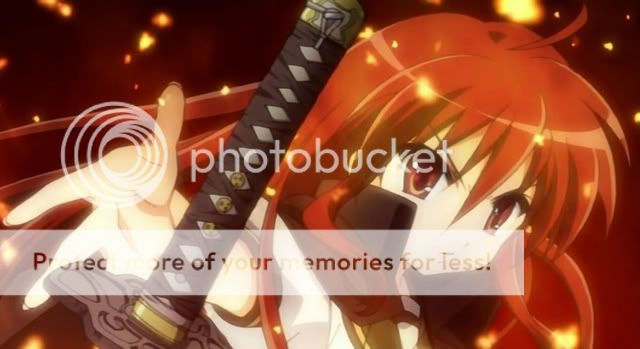

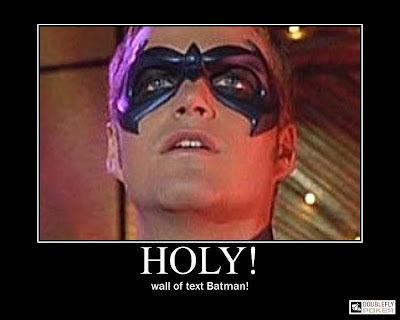
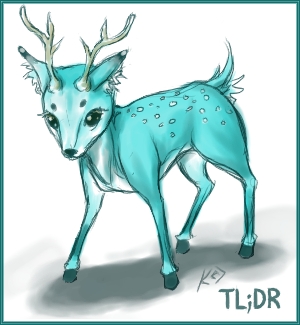
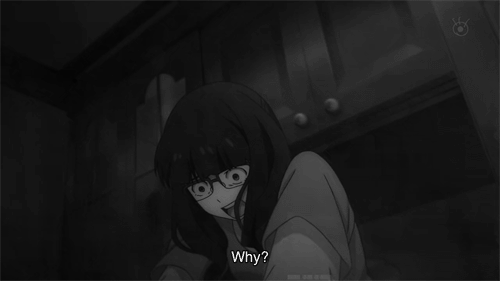
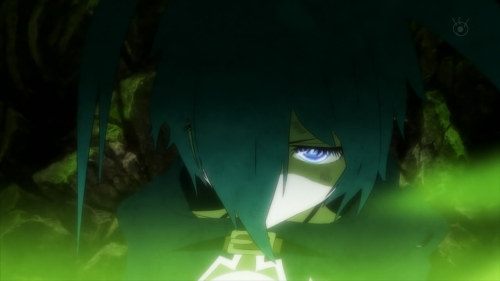
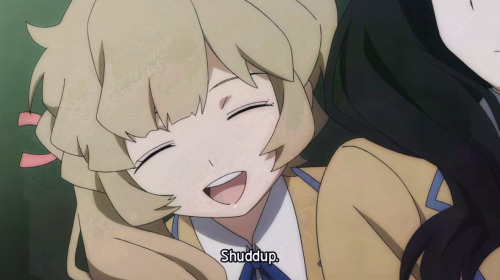
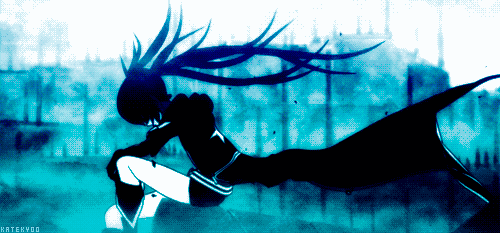
 for lack of words.
for lack of words.



